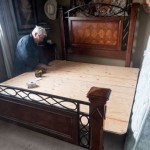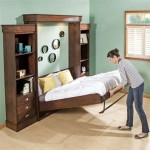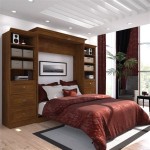Essential Aspects of Building Raised Bed Frames
Raised bed frames are an increasingly popular addition to home and community gardens, offering a range of benefits such as improved soil drainage, extended growing seasons, and reduced weed pressure. Building a raised bed frame may seem daunting, but understanding the essential aspects can help you create a sturdy and productive growing environment.
In this comprehensive guide, we will delve into the crucial elements of building a raised bed frame, ensuring you have the knowledge and tools to construct a successful garden. From selecting the right materials to assembling the frame and filling it with soil, we will cover everything you need to know.
Materials Selection
The choice of materials for your raised bed frame is crucial to its durability and functionality. Consider the following options:
- Wood: Cedar, redwood, and cypress are popular choices for their natural resistance to decay.
- Composite: Made from recycled materials, composites offer excellent durability and minimal maintenance.
- Metal: Galvanized steel or aluminum frames are durable and rust-resistant, but can be more expensive.
Frame Design
The design of your raised bed frame will depend on your specific needs and the available space. Consider the following factors:
- Height: Frames typically range from 6 inches to 3 feet tall, depending on the desired soil depth and drainage.
- Width: The ideal width for most raised bed frames is 2-4 feet, allowing for easy access to all plants.
- Length: The length of the frame can be customized to fit the available space and the number of plants.
Assembly and Construction
Once you have selected your materials and designed your frame, it's time for assembly. Follow these steps:
- Cut the materials to the desired length.
- Assemble the frame using screws or nails.
- Reinforce the corners for added stability.
- If desired, line the bottom of the frame with landscape fabric to prevent weed growth.
- Topsoil: A blend of organic matter and soil.
- Compost: Decomposed organic matter that provides nutrients and improves soil structure.
- Perlite or vermiculite: These materials help with drainage and aeration.
Filling the Frame
To provide the best environment for your plants, fill the raised bed frame with a nutrient-rich soil mixture. Consider:
Conclusion
Building a raised bed frame is a rewarding project that can enhance your gardening experience. By understanding the essential aspects outlined in this guide, you can construct a sturdy and functional frame that will support your plants and provide years of bountiful harvests.

How To Build A Wood Raised Garden Bed Gate

A Stylish Raised Bed Almost Anyone Can Build Finegardening

A Stylish Raised Bed Almost Anyone Can Build Finegardening

These Bricks Make Building Raised Garden Beds Simple Wirecutter

How To Build Raised Garden Beds Our First Homestead

Diy Raised Bed Garden Box Strong Beautiful Easy To Build

Build A Raised Garden Bed Step By Platt Hill Nursery Blog Advice

Raised Bed Frame With Construction Lumber

How To Make A Raised Garden Bed Last 25 Years With Plans Ptr

Diy Stained Wood Raised Platform Bed Frame Part 1 Addicted 2 Decorating
Related Posts







